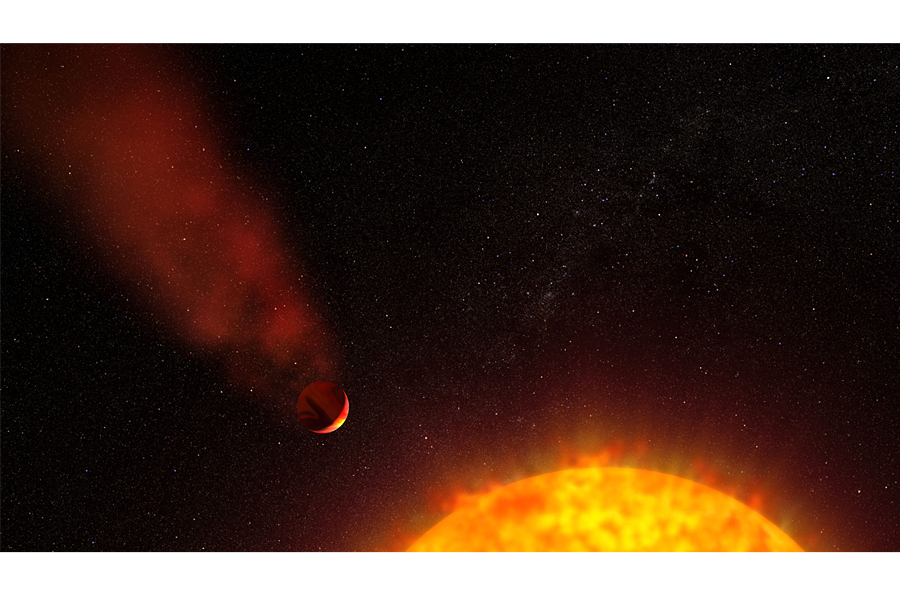How do you measure an exoplanet's magnetic field? Scientists unravel mystery.
Loading...
Sen—Scientists have developed a new method to tell the character of a distant exoplanet's magnetic field. And they have used it for the first time ever to estimate how this natural force field is twisted around the planet HD 209458b.
One of the important properties of both solid and gaseous planets is their possible magnetic field and its strength, or magnitude. On the Earth it protects living creatures from dangerous cosmic rays and radiation from the Sun. The quantity that determines the twisting, or torque, of the magnetic field is termed the planet's "magnetic moment".
Planet HD 209458b, named Osiris, is a hot Jupiter, approximately one third larger and lighter than Jupiter. It is a hot gaseous giant orbiting very close to the host star HD 209458. HD 209458b makes one revolution around the host star in only 3.5 Earth days. It has been known to astronomers for a long time and is relatively well studied.
Osiris is already an extrasolar planet with an astounding list of firsts: the first extrasolar planet discovered transiting its sun, the first with an atmosphere that contains oxygen and carbon, the first observed to be orbiting so close to its star that its heated atmosphere is escaping into space.
Scientists used observations with the Hubble Space Telescope of HD 209458b in the hydrogen Lyman-alpha line at the time of transit, when the planet crosses the star's disc as seen from the Earth. They studied the absorption of the star radiation by the atmosphere of the planet and were able to estimate the shape of the gas cloud surrounding the hot Jupiter, and, based on these results, the size and the configuration of the magnetosphere.
"We modelled the formation of the cloud of hot hydrogen around the planet and showed that only one configuration, which corresponds to specific values of the magnetic moment and the parameters of the stellar wind, allowed us to reproduce the observations," explained Kristina Kislyakova of the Space Research Institute of the Austrian Academy of Sciences.
At present, scientists believe that the size of the atomic hydrogen envelope is defined by the interaction between the gas outflows from the planet and the incoming stellar wind. Similarly to the Earth, the interaction of the atmosphere with the stellar wind occurs above the magnetosphere. By knowing the parameters of an atomic hydrogen cloud, one can estimate the size of the magnetosphere.
"The planet's magnetosphere was relatively small being only 2.9 planetary radii corresponding to a magnetic moment of only 10 per cent of the magnetic moment of Jupiter," explained Kislyakova.
Direct measurements of the magnetic field of exoplanets are currently impossible, so indirect methods are broadly used, for example, using the radio observations. There exist a number of attempts to detect the radio emission from the planet HD 209458b. However, because of the large distances, attempts to detect the radio emission from exoplanets have so far been unsuccessful.
"This method can be used for every planet, including Earth-like planets, if there exist an extended high energetic hydrogen envelope around them," said Maxim Khodachenko, a researcher at the Department of Radiation and Computational Methods of the Skobeltsyn Institute of Nuclear Physics at the Lomonosov Moscow State University.
Related Links:
Dry exoplanets surprise astronomers
Hubble reveals the atmospheric variations of hot Jupiters
Hubble takes the temperature of an extreme exoplanet
Original story from Sen. © 2014 Sen TV Limited. All rights reserved. This material may not be published, broadcast, rewritten or redistributed. For more space news visit Sen.com and follow @sen on Twitter.”





